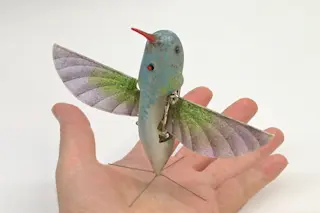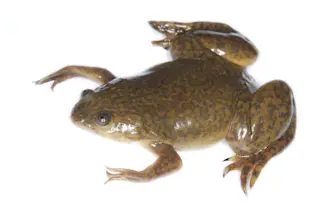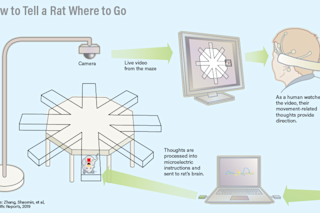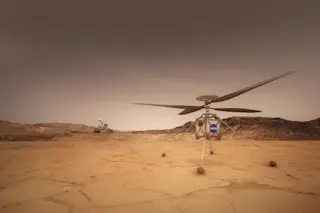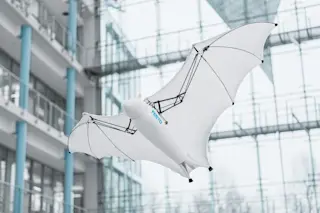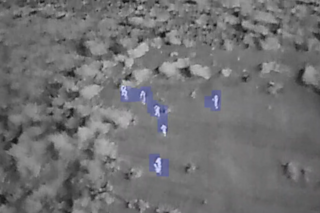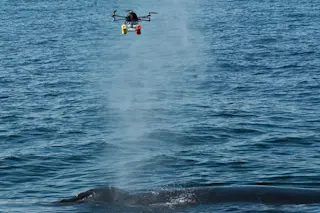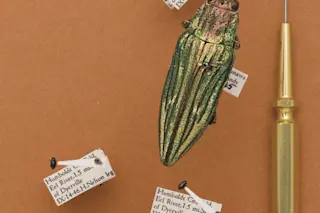When it comes to maneuverability, modern flying machines pale in comparison to an everyday pigeon. Birds can flap their wings to swoop, dive, glide, and alight on perches. Fixed-wing airplanes and rotary-wing helicopters rarely show that dynamism. In recent years, though, scientists have started finding ways to mimic the mechanics of bird flight through various robotic ornithopters, aircraft that fly with flapping wings. Aircraft based on today’s lab experiments could soon find use in military or search-and-rescue missions.
Illustration of SmartBird, a prototype flier made by Festo. | Kellie Jaeger
One of the most impressive of the new flock is SmartBird, a prototype flier made by Festo, a German-based automation technology company. The remote-controlled aircraft has wowed audiences on a worldwide tour as it uncannily flies like its avian inspiration, a herring gull. Made mainly of carbon fiber, SmartBird weighs 0.88 pound and has a wingspan of 6.6 feet. A ...


